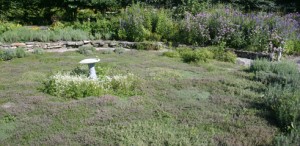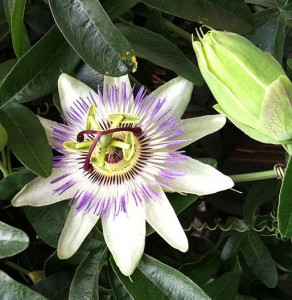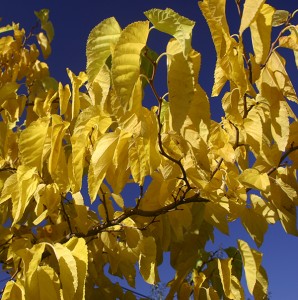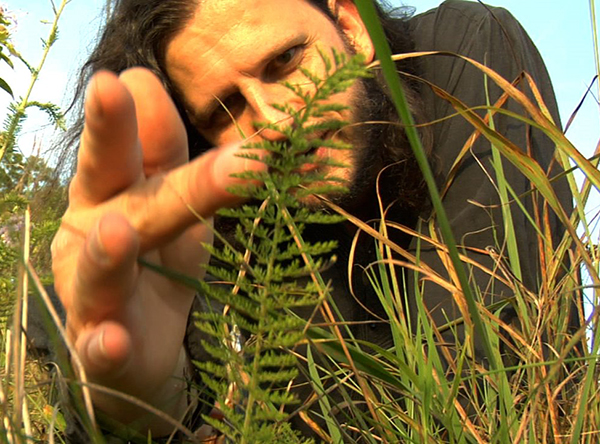A spring planting guide while you’re planning what to plant
Gardeners have a big advantage during deep darkness of a northwest winter: We get to pore over garden books and catalogs that offer shards of sunlight and whiffs of spring. Dreaming about striped tomatoes, salivating over the prospect of a fresh melon, imagining the thrum of a snapping pea, gardeners know that their dreams and will be rewarded with a well-stocked kitchen when the sun returns.
While curled up by the fire or the space heater with your summer hopes this winter, consider adding the flowerful, textural and healing world of growing medicine along with your food. The results will improve your garden — many medicinal plants also support beneficial bugs while confusing problematic pests — and improve your health.
It is absolutely irresponsibly unfair to ask any herbalist to narrow their favorite herbs down to a measly ten, and reasonable people will disagree heatedly about how to go about trying. This particular list is intended as a general top 10 list of medicinals that are easy to grow from seed or starts. This article is not intended to substitute for medical advice, as each person has a specific history and specific needs.
1. Thyme (Thymus vulgaris)

This familiar salad-dressing herb is actually a medicinal powerhouse. As its most common use suggests, thyme aids digestion. It also kills bacteria, fungi and parasitic worms.
One of thyme’s less-known uses is as a respiratory aid. It soothes the lung’s mucous membranes, limits spasms, fights pathogens and helps you cough out accumulated gunk.
Steaming is a great for this purpose: Take a large handful of fresh or dried herb, put it in a bowl and cover with boiling water. Then, with your head over the bowl and under a towel, breathe deeply to get the herb’s wonderful aromatics into your nose and lungs.
Use thyme externally as a skin wash or soak to help fight or prevent infections. Internally, thyme promotes excretion through the urinary tract, and can help disinfect on its way out.
The low-growing aromatic plant is easy to maintain in a garden or on a window sill.
2. Yarrow (Achillea millefolium)
The Greek story of Achilles offers clues to the medicinal nature of this plant. The hero’s mother, the nymph Thetis, dipped her newborn son in the River Styx to make him immortal. His only vulnerable spot was his heel, where she’d held him.
The herb named for him is most famous for staunching bleeding in wounds. It also is a bitter tonic aiding digestion, decreases inflammation, tightens lax membranes, helps relieve pain, and kills bacteria and fungi. Taken hot it stimulates sweating; taken cold it stimulates urine flow. As a flower essence yarrow is a favorite for emotional and spiritual boundaries. Alaskans rub the flowers on their skin to ward of mosquitoes, with some effect.
Yarrow loves sun, tolerates shade, and is very drought resistant once established.
3. Garlic (Allium sativum)
This is one of the plants that, given a choice, I’d have to have with me on a desert island. It has shockingly broad medicinal uses, tastes great, deters garden pests, grows easily and is very space efficient. What’s not to love?
It’s a must-have herb during the winter for its broad antimicrobial effects. Not only is it effective at fighting viruses and bacteria, but it also knocks out parasites and fungi including Candida albicans. This makes it useful for infections almost anywhere in the body, taken internally in food or applied topically to an infected site.
Garlic also lowers bad cholesterol while raising good cholesterol, and helps lower high blood pressure. It prevents dangerous blood clots, lowers high blood pressure and has been shown to help limit cancer growth.
4. Marshmallow (Althaea officinalis)
The marshmallow plant is all about the smooth. Suede-silk leaves grow in tall, upright, space efficient plants. The medicinal variety’s small white flowers are delightful, though not especially showy.
Marshmallow is a simple but powerful medicine, providing nutritious, soothing slime to help almost condition that’s dry or raw: lungs, burns, constipation, burning from bladder infections and even peptic ulcers.
The medicine comes from the root, so grow a patch of marshmallow to ensure continual harvest. Add a handful of the dried or fresh root to cool water an let sit for at least 15 minutes and then drink. Instant slime!
5. Calendula (Calendula officinalis)
Cheery calendula’s prolific yellow and orange flowers are good for both the garden and the gardener. The plant deters pest insects much like their marigold cousins and offer a bright contrast to their neighbors.
The sticky resin on Calendula’s edible flowers is terrific for healing wounds and soothing membranes, externally and internally. Used internally, calendula combines well with drying herbs for respiratory infections. Dried flowers can brighten wintertime teas—you can eat the whole flower as it floats around in your cup.
As few as two or three of the sun-loving plants will give provide more flowers than a gardener can easily keep up with picking, self seeding prolifically so the garden is always blooming.
6. Artichoke (Cynara scolymus)
Many people have heard about milk thistle as a miracle herb for the liver. What you may not have heard is that its near cousin artichoke has the same benefits while being far more space efficient — and much less invasive. While artichoke plants may be relatively low yielding of the flower buds we eat the dinner table, the plant is extravagant in the leaves it offers as medicine.
Artichoke has an affinity for the entire digestive system. The bitter taste of the leaves help promote proper digestive secretions, which help people get the most from their meals. The liver is also where the body makes cholesterol, so it’s not surprising that artichoke helps lower cholesterol even in the face of a poor diet. It’s also handy if your idea of eating artichokes involves lots of melted butter.
Some research even suggests the herb can lower blood sugar, helping stem a tendency toward Type II diabetes that is increasingly prevalent in the United States.
7. Lavender (Lavandula spp.)
Best known for its perfume, lavender is also a remarkably versatile medicine. Lavender is a traditional ingredient in the seasoning Herbs de Provence, where its floral and bitter qualities help improve digestion while protecting the diner from pathogens.
The chemicals that make lavender so wonderfully aromatic also make it a potent pathogen fighter. The name comes from the French word for washing; the earliest antimicrobial soaps were made with lavender. The flowers fight bacteria, viruses and fungi, and its essential oil helps heal wounds and burns.
Lavender is also deeply cheering in cases of sadness or mild depression. A hot cup of lavender tea, brought to you by a friend, is wonderful for alleviating a broken heart.
8. Passionflower (Passiflora spp.)

This lush, tropical vine does remarkably well in western Oregon, thriving in sun even with substantial neglect. They can climb almost anything, from a trellis to window screens. And because they’re climbers, there’s more space on the ground to grow other things.
The varieties that do best in the Pacific Northwest don’t usually produce much by way of fruit, but prolifically offer their unusual and beautiful flowers — the part used medicinally.
As prolific as they are, medicinally passionflower is about calm. Taken internally as tea or tincture, passionflower reduces restlessness and anxiety, relaxes spasm (including the tightening of blood vessels in high blood pressure), limits inflammation and helps promote sleep.
9. Licorice (Glycyrrhiza glabra)
Licorice is one of the power-house medicinal plants, offering such a broad spectrum of health effects that many herbalists consider it good for just about everything. It’s a garden power house, too: It’s in the pea family, and like its relatives also fixes nitrogen from the air to make it available to nearby plants.
The medicine is in the root, so plant a patch to keep a steady supply on hand. It grows very easily from seed.
Licorice root is famously immune supporting and anti-viral— it has been shown to help with conditions including hepatitis C. Like marshmallow it has soothing properties, and so is often used for irritation in the digestive tract, urinary tract and the lungs. Licorice supports the liver and the adrenals, making it very useful in many cases of allergies and asthma. It also helps the lungs by reducing spasms and inflammation while supporting healthy coughing to expel mucus.
10. Something you plant for the sheer joy of it

Few gardeners face the problem of too much room to plant. And with so many plants performing multiple functions, it can be hard to justify growing something just for the joy of it.
Consider this a doctor’s prescription to do just that.
Joy is critical to a person’s whole health — it’s on every treatment plan I give to every patient. Sometimes a plant comes along that you just adore even though it’s not edible, or it only flowers for a few weeks once a year, or it takes an unconscionable amount of space.
My joy plant for many years was lilac, and it took great effort to give myself permission to plant one. My new joy plant is a contorted mulberry (Morus bombycis). It has a beautiful shape in the winter and lush foliage in the summer. But it’s a complete knockout in the fall when its leaves turn a brilliant clear yellow that glows even in moonlight.
I see my mulberry whenever I go to or from my bedroom. It reminds me of the beauty of the world and my part in it. And after all, isn’t that one of gardening’s biggest payoffs?
Looking for plants? Check out my favorite seed companies, plant companies, local Portland gardening resources and my book recommendations.
NB: A version of this story originally appeared in In Good Tilth.




